#Megalithic Monuments
Explore tagged Tumblr posts
Text
Exciting Announcement!
Today I have some exciting news for all the readers of this blog. I’ve just published my 3rd book in E-book format with Paperback and Hardcover versions being released on May 10th, 2025. The title of the book is Revealing Earth’s Hidden Past: Ancient Civilizations and Extraterrestrial Influence. One of the reasons I chose to publish a book on this subject matter is that my blogs on this topic…
#academia#ancient airplane artifacts#ancient aliens#ancient art#ancient astronaut artifacts#Ancient Civilizations#Annunaki#book launch#Daniel Wolfert#E-book#Extraterrestrial Influence#geoglyphs#hidden history#historical anomalies#megalithic monuments#new ancient discoveries#pyramids#Revealing Earth&039;s Hidden Past#sunken cities#The Cabal#The Controllers#underground cities#underwater ruins#world wide flood#Younger-Dryas period
0 notes
Text
Unlike Sun-focused Stonehenge and other megalithic monuments, Tomnaverie and similar stone circles hint at the Moon’s importance to ancient people.
These arrangements of giant boulders are so ancient and yet feel so familiar that they seem like portals, enabling access to somewhere that is both distant and connected to us. I think this is as their makers intended.
But one collection of stone circles stands apart. In northeastern Scotland, stone circles are related not to the Sun, but to the Moon. And they all possess a unique, defining trait: They contain a recumbent stone, a large stone on its side, flanked by two upright stones. The recumbent rocks are usually found on the south or southwest arc of the circle—where the summer Moon is prominent in the sky.
Some of the boulders in these stone circles contain red jasper, connoting blood. Some of them are flecked with quartzite, suggesting the Moon, and quite literally reflecting its light. The most otherworldly of these stone circles, to my mind, is called Tomnaverie, located about 30 miles west of Aberdeen.
0 notes
Text

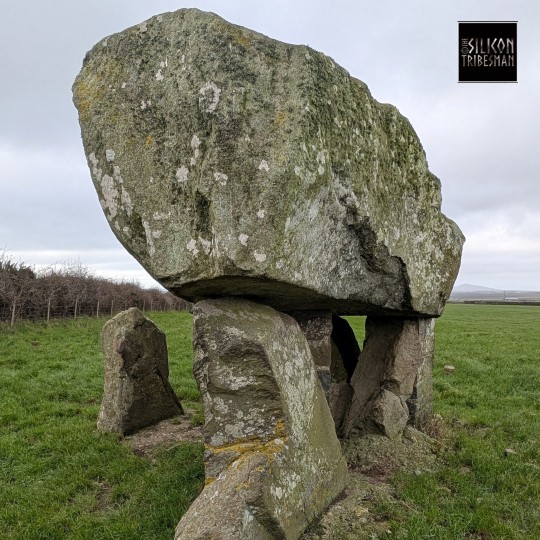


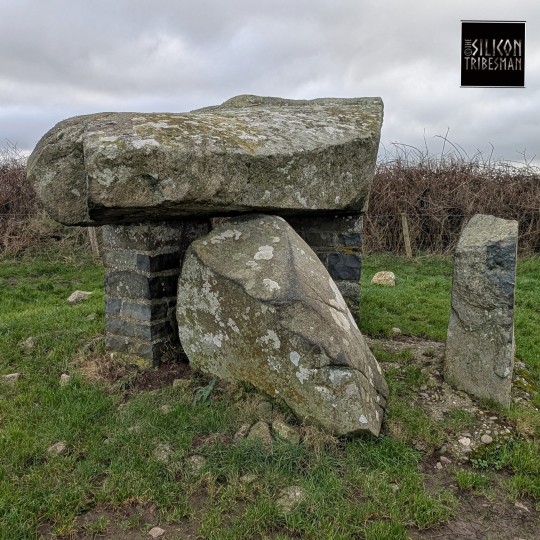
Tŷ Newydd Neolithic Burial Chamber, Anglesey, Wales
#ice age#stone age#bronze age#iron age#prehistoric#prehistory#neolithic#mesolithic#paleolithic#archaeology#ancient cultures#ancient living#ancient craft#megaliths#monument#burial chamber#burial ground#burial mounds#cromlech#dolmen#cairn#wales#Anglesey
133 notes
·
View notes
Text

The Buildings of England
CORNWALL
Second Edition, 1970.
230 notes
·
View notes
Text
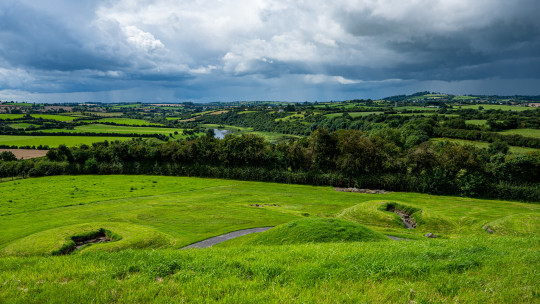
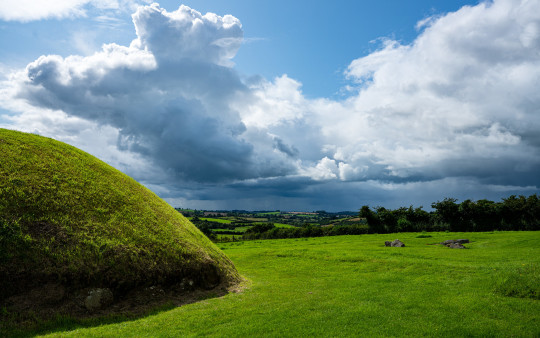
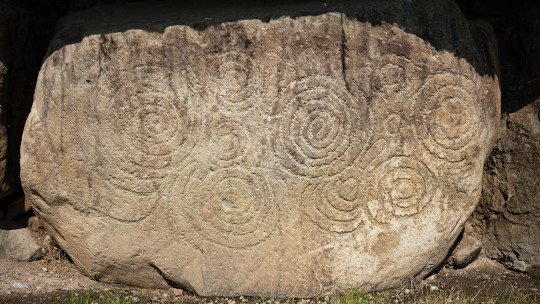

Ireland - Knowth (2) (3) (4) by tombomba2
#landscape#countryside#cloud formations#prehistoric monument#passage tomb#burial mounds#megalithic art#brú na bóinne#boyne valley tombs#ireland#county meath
35 notes
·
View notes
Text

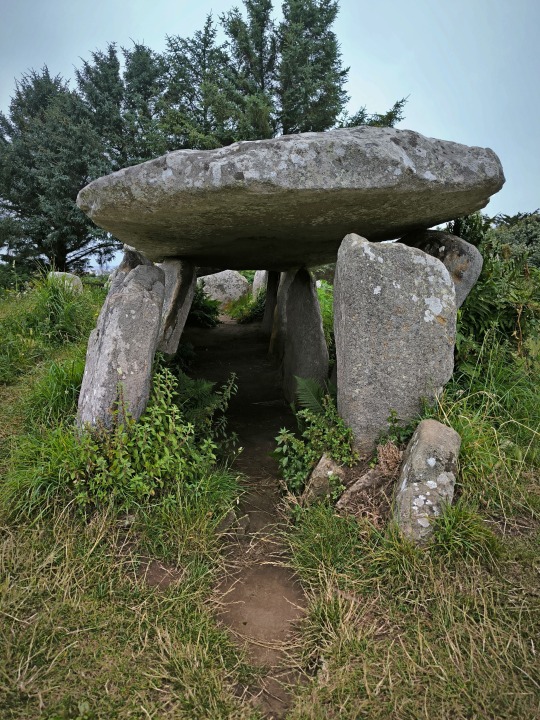
Allée couverte, Bretagne
#Bretagne#breizh#bzh#allee couverte#megalithes#monument funeraire#pierres levees#brittany#archeology#archeologie#megalith
37 notes
·
View notes
Text
Stonehenge Mysteries: Men, Mystery, and a Marvel of a Monument

Stonehenge is a megalith organized on the Salisbury Plain in Wiltshire, England, and like all ancient monuments, it has been fascinating for centuries. The construction of the pillars that form the ceiling is thought to be so tall and symbolic that it creates curiosity. Though the available knowledge regarding Stonehenge remains unbiased, several issues are still mired in controversy. This typical blog post focuses on Stonehenge mainly in terms of the purpose of its construction, the methods used in construction, and the celestial purpose that was assigned to the stone circle.
The Purpose of Stonehenge
Arguably, one of the most frequently asked questions about Stonehenge is about the monument’s function. There are a number of theories that, when examined, are proffered with much rationale as to why they should be accepted.

A Ceremonial Site
Due to its construction complexity and its specific layout, Stonehenge was expected to be used ceremonially. This indicates that it was used in religious observances since it has an alignment with the sun solstices of the summers and winters. The main structure of the Heel Stone was placed to align itself with the sun rise on the summer solstice, which suggests solar cult or agricultural rituals.
A Burial Ground
A study carried out on human bones pulled from various digs in and around Stonehenge suggests that it served as the burial place of individuals. Cremated remains were observed at the site, indicating that it was one of the important burial grounds for the elites or people of higher rank in that period and was in use as early as 3000 BC. But this theory fits with the belief that Stonehenge was built as a shrine for ancestor spirits.
A Healing Center
There are theories that certain elements of the monument, as well as the placement of Stonehenge as a whole, were intended to allow for this. A couple of skeletons bearing marks of diseases and wounds that may have been fatal imply that those in ailing states could trek to the shrine with the hope of being healed. The bluestones used in the construction of the circle were believed to have healing virtues, and these originated in Wales.

An Astronomical Observatory
One of the dominant theories is that the grand monument was an ancient observatory, and the stones were aligned with specific stars. This is consistent with the idea since the precise laying down of stones correlates with the occurrence of solstices and equinoxes. It could have probably been utilized in the prediction of astronomy, which helped in agriculture and the scheduling of religious ceremonies.
The Construction of Stonehenge
Historians and archaeologists have marveled at the creation of Stonehenge, which is a circle of stones. No technology was available, and yet it was quite intriguing how the prehistoric people moved and set up those large stones.
Transporting the stones
Stonehenge consists of two types of stones: sarsen stones and bluestones of the neolithic period from western Asia and Europe, respectively. The giant sarsen stones, which each weigh up to 25 tons, may have come from the Marlborough Downs, located 32 kilometers away. These were the smaller bluestones that could weigh up to 4 tons and were transported from Preseli Hills in Wales, more than 240 km away.
Earlier, it was assumed that the construction was transported using sledges and rollers, and later through water bodies. Such an immense operation would have necessitated proper planning in terms of human labor and advanced engineering.
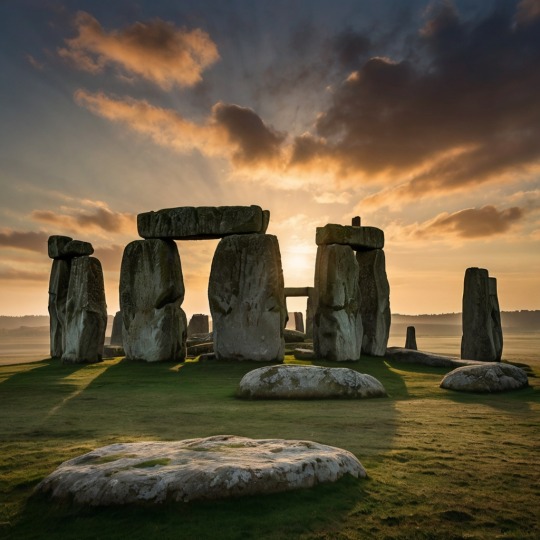
Erecting the Stones
Even when the stones were on site, another problem arose as to how best to put them up or raise them. Currently, ancient writers have posited that prehistoric builders employed a system of earth ramps and wooden beams to lift the construction pieces and maneuver them to their appropriate positions. The lintels, or horizontal stones, were fitted and locked in position through the use of mortise and tenon joints, a sign of the high technicality that had been attained.
Precision and planning
Because there are only megaliths arranged in a circular fashion within the walls of Stonehenge, constructing the monument was a highly precise undertaking that needed careful planning as well as knowledge of geometry and astronomy. They are arranged neatly in a cyclic fashion, and several of them are oriented in specific positions depending on the rightful rites associated with stars. The sophistication of the measurements and the accuracy of the alignments show the builders must have been skilled people with knowledge.
Celestial Alignments
Another interesting historical fact about Stonehenge is that the construction of the circle was to have some kind of correlation with some astronomical phenomena. The feature has had people believing that it was used for astronomical purposes since it was created.
Solstices and Equinoxes
Arising from the above, it can be well argued that Stonehenge was well-aligned to create a solar calendar with shadow markers that pointed directly to the summer and winter solstices. As such, during the summer solstice, the sun reverses its position over the Heel Stone, rises directly at the monument, and provides a shadow through the heart of the stones. This formation can be observed during the shortest day of the year, the winter solstice, when the sun sets in the direction of the Altar Stone. Such alignments indicate that Stonehenge wanted to signify the change of seasons, something that was indeed important in civilizations that dealt with farming.
Lunar Alignments
However, it is not only solar alignments that have been associated with Stonehenge; lunar relationships are evident as well. Some stones are oriented north-south, east-west, and large stones lie parallel to the moon; the builders may have monitored the lunar cycle. It could have been used to estimate eclipses of the moon or some other event, and this has been achieved when its current facet aligns with a past instance.
When can Stonehenge be crowned as having the enduring mystique of Stonehenge?
Nonetheless, the mystery enveloping Stonehenge remains intact since there are countless theories developed by researchers, but the monument still has many secrets. The intent behind its creation, the architectural techniques used in building it, and the connection with astronomy continue to be the objects of discussion and wonder. These monuments oppose the question of historical relevance by holding immense aesthetic and cognitive appeal for multi-generational scrutiny.
Stonehenge is not just a set of stones set together; it is a dynamically creative structure erected by our forefathers. This alignment with the stars, together with the effort that went into the construction of the monument, shows how the value system of paleolithic people pegged heavily on the physical environment.
It does make you think that as people carry on digging around Stonehenge and researching it, will more features and facts surrounding the monument be revealed? Nevertheless, the true purpose of Stonehenge can be explained only in riddles, and a shadow of it is still being whispered to inspire and amaze people around the world, all the while making them think about our ancestors’ genius in the field of architecture.
Thus, having analyzed the mysteries of Stonehenge, we opine that it is beneficial to get closer to understanding the achievements of the ancestors. If, indeed, Stonehenge functioned as a meeting place for the elite to conduct rituals, an emplacement for burying the dead, a sanctuary to solicit healing from gods, or a site to conduct an astronomical calendar, it remains today as a testament to mankind’s wisdom and efforts to learn about the world.
#Stonehenge#Megalith#Mystery#Monument#SalisburyPlain#Wiltshire#England#AncientMonument#CeremonialSite#BurialGround#HealingCenter#AstronomicalObservatory#SolarCult#AgriculturalRituals#AncestorSpirits#HealingVirtues#Bluestones#SarsenStones#NeolithicPeriod#MarlboroughDowns#PreseliHills#Wales#Geometry#Astronomy#SolarCalendar#ShadowMarkers#Solstices#Equinoxes#LunarAlignments#Eclipses
18 notes
·
View notes
Text
holy shit XD I've never heard the legends of Cu Roi before, a half-demon man who fought Cu Chulainn over one of his lovers. This story has me completely amused. And he has a huge burial site after his passing. It's amazing how mythological legends can combine with historical monuments.
edit: he was also a massive ally of his forces, i'm learning as i go along ^^
#personal#cu chulainn#LMAO i was just googling cairns and megaliths in search of a particular monument that i cant seem to find
2 notes
·
View notes
Text
youtube
Unveiling Ancient Egypt’s Megalithic Marvels: Secrets of Advanced Engineering
The enigmatic wonders of Ancient Egypt have captivated humanity for centuries. From the towering pyramids to the mysterious Sphinx, these megalithic marvels continue to inspire awe and intrigue. Could these awe-inspiring creations be evidence of advanced ancient technology, or do they hold secrets of a lost civilization?
The Colossal Statues: Titans of Stone
Ancient Egypt’s colossal statues, such as the Great Colossi of Memnon, are feats of artistry and engineering.
Weighing hundreds of tons, these statues were carved with astonishing precision and transported across vast distances.
How could a civilization over 4,000 years ago achieve such monumental feats without modern machinery?
The Pyramids: A Symphony in Stone
The Great Pyramid of Giza is a marvel of architectural mastery, aligned with celestial bodies and featuring flawless geometry.
Some stones used in its construction weigh up to 80 tons, raising questions about ancient construction techniques.
Scholars debate whether these structures were built with rudimentary tools or advanced, forgotten technology.
Transporting Monoliths: Moving Mountains
Ancient Egyptians transported massive stone blocks from quarries to construction sites across rugged terrain.
Theories suggest the use of sledges, ramps, and water-based flotation systems, but definitive answers remain elusive.
Guardians of Eternity: The Enigma of the Sphinx
The Great Sphinx of Giza, with its weathered features and imposing presence, stands as a sentinel to the past.
Some researchers believe it may predate traditional timelines, possibly linked to the Great Flood mentioned in ancient texts.
Its precise craftsmanship and celestial alignment deepen its mystery.
Whispers of the Past: A Lost Civilization?
These remarkable structures might be the legacy of a civilization lost to history.
Evidence points to a cataclysmic event that could have wiped out advanced societies, leaving only fragments of their achievements.
Such theories challenge traditional historical narratives and invite us to rethink humanity’s origins.
Echoes of Grandeur
Ancient Egypt’s megalithic marvels continue to inspire wonder and curiosity.
Whether created through sheer determination or advanced techniques, these structures stand as timeless testaments to human ingenuity.
They remind us of the enduring quest to understand our past and connect with the brilliance of those who came before.
Exploring the mysteries of Ancient Egypt invites us to keep questioning and learning. Share your thoughts on these incredible achievements in the comments below, and join the conversation about the secrets of our shared history.
#ancient egypt#megalithic structures#egyptian pyramids#sphinx mysteries#advanced ancient technology#lost civilization#ancient engineering#great pyramid of giza#colossal statues#egyptian monuments#ancient wonders#ancient egyptian history#archeological discoveries#lost ancient technology#sphinx enigmas#pyramid construction techniques#ancient stone transport#egyptian architecture#ancient history mysteries#advanced engineering marvels#Youtube
3 notes
·
View notes
Text
Masuda Iwafune
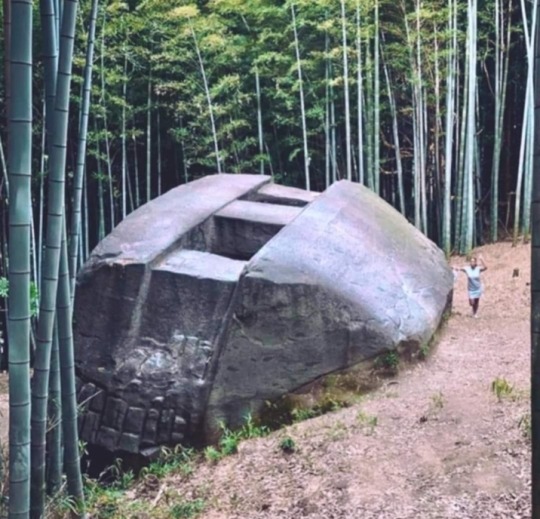
The Masuda Iwafune is a large, mysterious stone structure located in Asuka, Japan.
This megalithic monument, also known as the “Masuda Rock Ship,” is carved from a single piece of granite and is notable for its unusual shape, which resembles a boat or ship.
The stone measures approximately 11 meters in length, 8 meters in width, and 4.7 meters in height, weighing an estimated 800 tons.
Despite extensive study, the exact date of its construction, purpose, and the methods used to carve the stone are still unknown.
#Masuda Iwafune#Masuda Rock Ship#stone structure#megalithic monument#ancient civilizations#granite#mystery
3 notes
·
View notes
Text



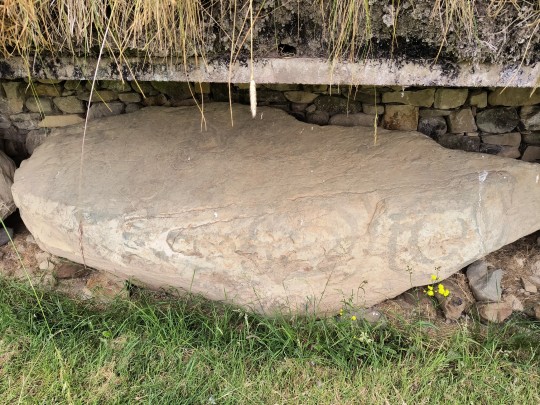
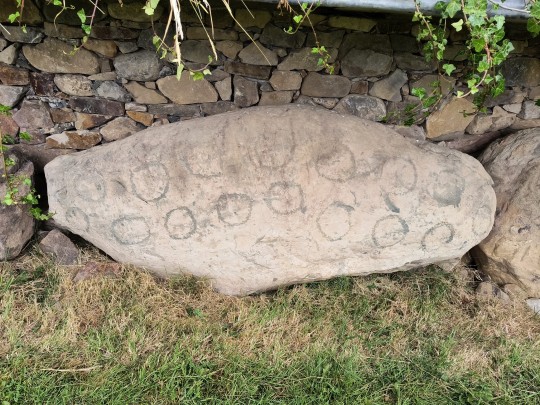
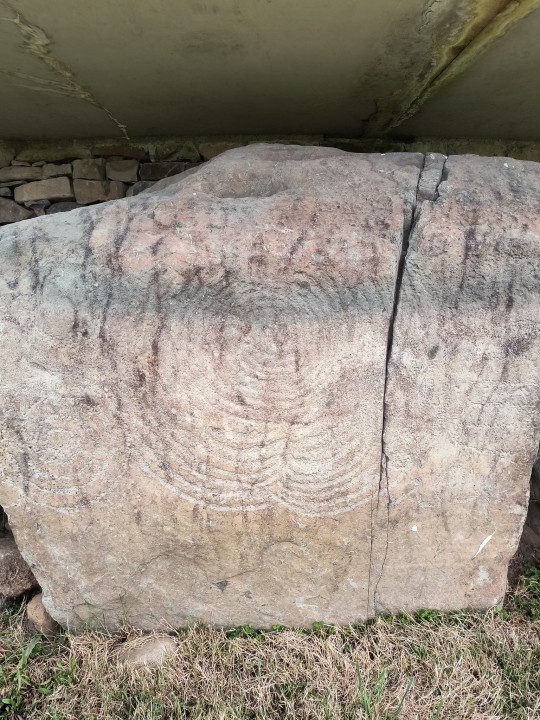



Cnogba / Knowth • 1
Some pics from my tour to Cnogba/Knowth. Don't even know what to say aside from it blew me away. It's huuuge and the kerbstones are so captivating it was so hard to peel myself away to get the bus back. Art over 5,000 years old and *I* got to see it. Jsjshskdkdhsj
The satellite mounds and their passages and the entrance stones and their standing stone alignments were also incredible
Crying on both the inside and the outside that the eastern entrance is obscured by the metal stairs like, people walk right by, don't even notice it, it's not part of the tours but hello?? The eastern passage and it's timber circle outside? The remains of ritual deposits outside and the grave goods inside?? The MACEHEAD??
OPW if u see this ilu but plz unbury the eastern passage it deserves just a little more dignity >.>
The western passage's entrance is the last two pics, it's nice and cleared, and you can see the entrance stone's designs and the aligned standing stone very well
#stone posting#gunna use this tag for megalithic monument pics from my trip 🪨#KNOWTH#crying 5ever i got to be here in person#Cnogba#Brú na Bóinne#my photography
5 notes
·
View notes
Text


Cors y Gedol Neolithic Burial Chamber, Dyffryn Ardudwy, Wales
#ice age#stone age#bronze age#iron age#prehistoric#neolithic#prehistory#mesolithic#paleolithic#archaeology#burial chamber#burial mound#burial ground#capstone#monument#ritual#ancient living#ancient cultures#ancient crafts#ancient sites#megalithic#landscape#Wales
104 notes
·
View notes
Text
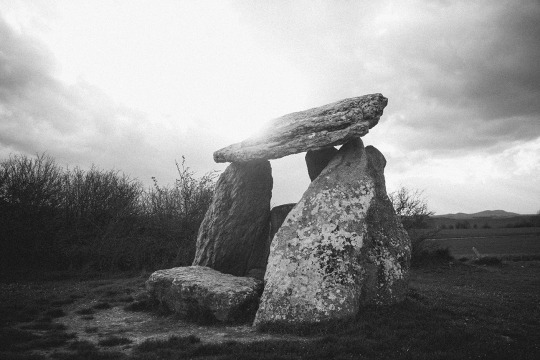

The Sorginetxe Dolmen, is a prehistoric monument located near the town of Salvatierra/Agurain in the Basque Country.
Dating back to around 3000 BC, it's one of the most beautiful and well-preserved megalithic monuments in Euskadi. Sorginetxe is a Basque term meaning "house of Sorgin" or "house of witches". In Basque mythology, it is said that it was built with large raised stones, brought by night by the sorginak or sorgiñak on the tip of their distaffs. Many places and megalithic monuments in the Basque Country bear a name that refers to the Sorgin (Sorgin zilo, Sorginetxe).
1 note
·
View note
Text




The Irish National Heritage Park - Prehistoric Ireland (2) (3) (4) by Laura Barrio
#museums#open air museum#traditional house#dolmen#standing stones#stone circle#megalithic monument#thatched roof#stone building#ireland#county wexford
14 notes
·
View notes
Text
youtube
No Navio de Pedra de Masuda! Japão Oculto | Arqueologia Proibida
Destoante dos padrões e estilos xintoístas e budistas, Masuda-no-iwafune ("Navio de Pedra de Masuda"), no topo de uma colina em meio a um bairro residencial na vila de Asuka, no distrito de Takaichi, província de Nara, é um dos monumentos megalíticos mais estranhos e misteriosos do Japão. Esculpido em um único bloco de granito de cerca de 800 toneladas, aplainada na parte superior, onde há duas cavidades quadradas escavadas, e com recortes em alto-relevo em forma de treliça nas laterais, evoca uma alta civilização desconhecida que desapareceu sem deixar rastros. Cláudio Suenaga conseguiu localizar o "Navio de Pedra de Masuda" e lá esteve, no que traz todos os detalhes recolhidos nessa inebriante aventura.
Fotos com a presença de Suenaga por Alexandre Akio Watanabe.
Música: Desert Planet, de Quincas Moreira
Artigos mencionados disponíveis para download em: https://suenagadownloads.yolasite.com/
Hidden Japan: https://claudiosuenaga.yolasite.com/hidden-japan/
Torne-se o meu Patrono no Patreon e tenha acesso a esta matéria completa, bem como a centenas de conteúdos exclusivos: https://www.patreon.com/posts/92180058
Ou inscreva-se gratuitamente e tenha acesso a todos os meus posts públicos: https://www.patreon.com/suenaga
➡️ Toda a minha rede aqui: https://linktr.ee/suenaga
➡️ E-mail: [email protected]
Livros que o Deep State não quer que você leia:
✅ "Encuentros cercanos de todo tipo. El caso Villas Boas y otras abducciones íntimas": Amazon.com (envios a todo o mundo desde os EUA): https://amzn.to/3Lh93Lb Amazon.es (envios a todo o mundo desde a Espanha): https://amzn.to/3LlMtBn Amazon.co.uk (envios dentro do Reino Unido): https://www.amazon.co.uk/-/es/Cl%C3%A1udio-Tsuyoshi-Suenaga/dp/B0BW344XF1/ Amazon.de (envios dentro da Alemanha): https://www.amazon.de/-/es/Cl%C3%A1udio-Tsuyoshi-Suenaga/dp/B0BW344XF1/ Amazon.fr (envios dentro da França): https://www.amazon.fr/-/es/Cl%C3%A1udio-Tsuyoshi-Suenaga/dp/B0BW344XF1/ Amazon.it (envios dentro da Itália): https://www.amazon.it/-/es/Cl%C3%A1udio-Tsuyoshi-Suenaga/dp/B0BW344XF1/ Amazon.co.jp (envios dentro do Japão): https://www.amazon.co.jp/-/es/Cl%C3%A1udio-Tsuyoshi-Suenaga/dp/B0BW344XF1/
✅ "As Raízes Hebraicas da Terra do Sol Nascente: O Povo Japonês Seria uma das Dez Tribos Perdidas de Israel?" https://www.lojaenigmas.com.br/pre-venda-as-raizes-hebraicas-da-terra-do-sol-nascente-o-povo-japones-seria-uma-das-dez-tribos-perdidas-de-israel
✅ “Illuminati: A Genealogia do Mal"; "Contatados: Emissários das Estrelas, Arautos de uma Nova Era ou a Quinta Coluna da Invasão Extraterrestre?"; "50 Tons de Greys: Casos de Abduções Alienígenas com Relações Sexuais - Experiências Genéticas, Rituais de Fertilidade ou Cultos Satânicos?"; e "Lua de Pedreiro: A Apoteose do Impossível - As fraudes da Missão Apollo e o lado oculto da NASA", em formato e-book em minha loja no Patreon: https://www.patreon.com/suenaga/shop
#japan#japan travel#japao#arqueologia#megalithic#ancient aliens#história#monument#youtube#mitologia#Youtube
1 note
·
View note